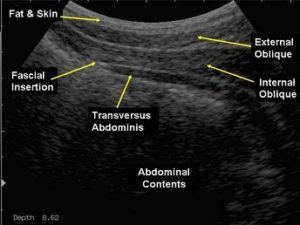Geoff Brockenshire, Senior Physiotherapist at Sydney Sports & Orthopaedic Physiotherapy talks core strength and strength training…two principles that should not be separated.
A common misconception is that core training is a part of your exercise regime that can be tacked onto the end of your session and be treated as a separate entity to your workout. It is very important to increase the strength and endurance of your core muscles, it is even more important to have those core muscles activated whilst you train. ‘The Core’ is a term used to describe the area of the body that sits below the rib cage and above the pelvis. It includes all of the abdominal muscles, most importantly the transversus abdominus, the lumbar spine, pelvic floor and intersegmental stabilizing muscles called the multifidii.
The most common mistake when training your core and strength training in general, is the over activation of the six pack and oblique muscles. When this occurs it does not allow the transversus abdominus to contract effectively enough to give support. The transversus abdominus is the deepest muscle layer in the abdominal wall and wraps around the ‘core’ of the body creating a corset type force to assist in the stability of the lumbar spine and pelvis. This combined with the elevation of the pelvic floor acts to increase the pressure in the abdomen, which in turn further increases stability. When you do a sit up and contract your six-pack or brace with your abs to lift a heavy weight, it reduces the pressure in the core, which in turn reduces the stability of the areas we need to be protecting.
When people are lifting heavy weights, it is common to ‘brace’ with you stronger six-pack and oblique muscles which causes the abdominal wall to distend and forces the back muscles to contract to stop the back moving too severely. When the core is contracted correctly, the belly button should move closer to the spine, the six-pack muscles and obliques are relaxed and the transversus continues to contract even throughout breathing. You should always have a mild constant contraction of the transversus abdominus and elevation of the pelvic floor throughout your normal life. When you are training you need to increase this contraction to maintain your stability while you breath out and lift against the resistance. You will find that having a stronger core will actually help you to perform better in the gym and ultimately lift heavier weights.
If you’re having trouble differentiating between your six-pack/oblique contractions and activating your core muscles, you may benefit from Real-time Ultrasound assessment, which can look at the abdominal wall and see which muscles are working and when.
For more information, contact the experts at Sydney Physiotherapy Solutions on 9252 5770.


